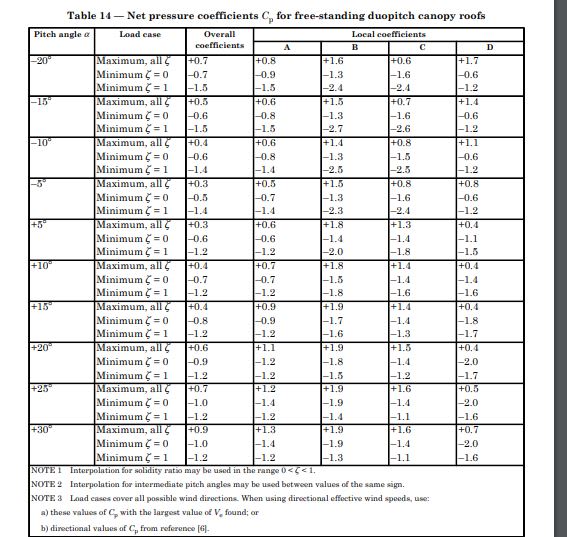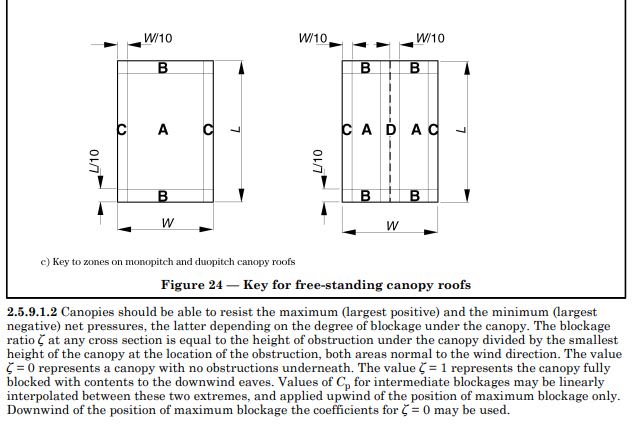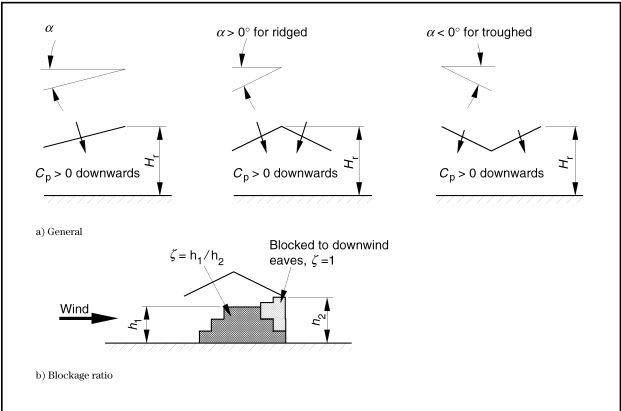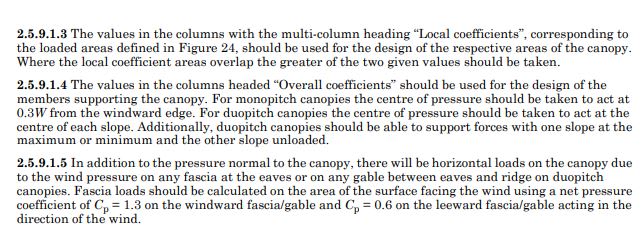Structural Matt
Structural
Designing a standalone Porte cochere as an open structure and in going through Chapter 27 of ASCE7-16 I am getting stuck at determining external pressure coefficient in step 6 of Table 27.2-1. My structure has a pitched roof, so I am using Fig. 27.3-5, and this is where my problems begin.
First problem: the figure specifies that h/L shall be between 0.25 and 1.0 but my structure has a ratio of 0.20. I don't see any information on what to do if you fall outside their determined range.
Second problem: What are the two load cases given in the figure? I can't find where it specifies what the Case A and Case B are for this particular figure.
First problem: the figure specifies that h/L shall be between 0.25 and 1.0 but my structure has a ratio of 0.20. I don't see any information on what to do if you fall outside their determined range.
Second problem: What are the two load cases given in the figure? I can't find where it specifies what the Case A and Case B are for this particular figure.





